Baleen whale found dead in waters off Tanjong Pagar likely struck by ship
Sign up now: Get ST's newsletters delivered to your inbox
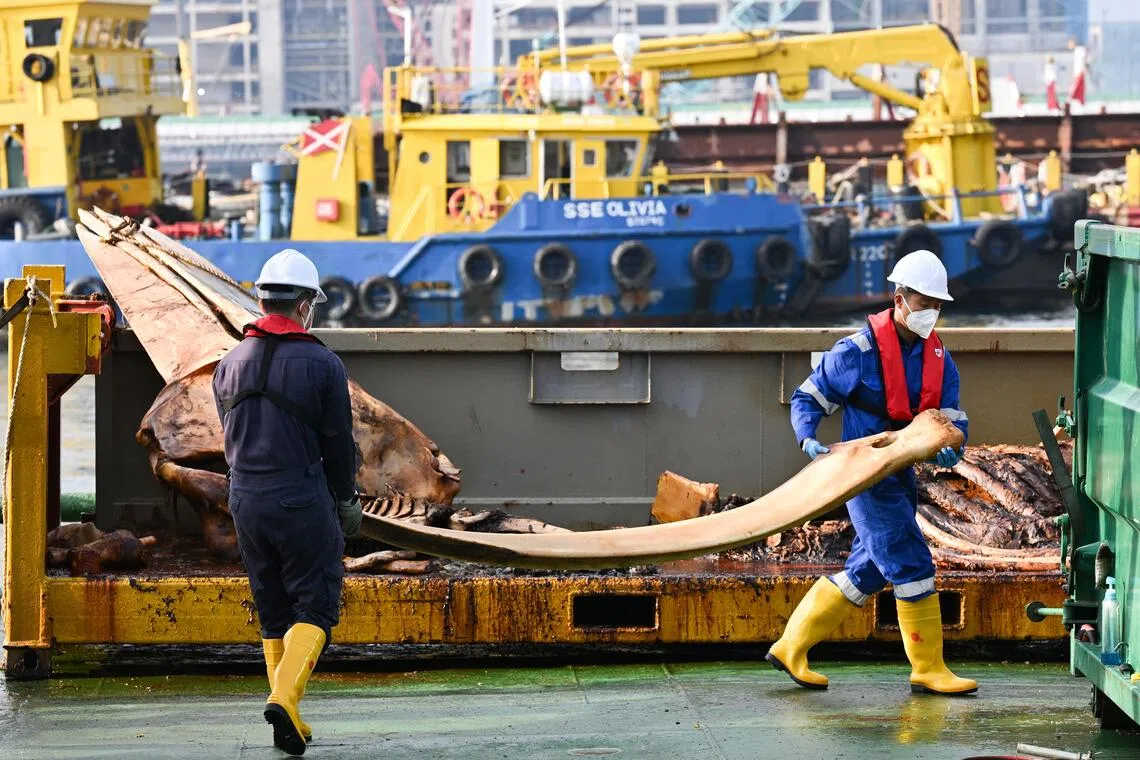
Curators Marcus Chua (right) and Foo Maosheng carrying the mandible bone from the baleen whale carcass for storage at the Singapore Salvage Engineers’ shipyard in Tuas, on Sept 26.
ST PHOTO: LIM YAOHUI
Follow topic:
SINGAPORE – The dead baleen whale that surfaced off Tanjong Pagar earlier in September had most likely been struck by a ship, scientists have found.
Dr Marcus Chua, who is helming the operation to study and preserve the whale, said the incomplete specimen’s injuries suggest that it was hit by a fast-moving vessel, one of the common threats that whales face worldwide.
“So, about halfway along its body behind the ribs, it is broken really cleanly, and this is the sign of blunt impact possibly by a ship,” said Dr Chua, the curator of mammals at the Lee Kong Chian Natural History Museum at the National University of Singapore.
“Some of the bones behind the head, the neck bones and the shoulders were also shattered.”
He revealed the findings to the media on Sept 26 at the Singapore Salvage Engineers’ (SSE) shipyard in Tuas, where the putrid carcass had been towed for processing on a barge.
Although it is unclear if the collision had caused the whale’s death, the animal was likely to have been dead for at least one to two weeks by the time it drifted to Singapore, said Dr Chua.
Based on its skull, the decomposing whale would have measured roughly 10.6m long when the filter-feeding mammal was alive. This is slightly shorter than an SBS Transit bus.
Coincidentally, the baleen whale was of a similar length to Jubi Lee
With a clearer estimate of when the whale died, Dr Chua said the museum can work with oceanographers to model the seas’ currents to trace the whale’s origins.
The exact species of rorqual whale, a family of baleen whales characterised by their pleated throats, still remains unknown to the museum team, although they have shortlisted four possible candidates that were not disclosed.
The museum team has collected the whale’s DNA, which it hopes to find a match for in whale populations around the globe, said Dr Chua.
Despite the museum’s experience in handling Jubi Lee, the current badly decomposed carcass presented a fresh set of challenges.
For one thing, the SSE wound up spending two days transporting the carcass from near Marina South Pier, as a result of a literal “jaw dropping” moment.
Near sundown on Sept 12, the right part of the whale’s lower jaw – a bone known as the mandible – fell out of a container holding the carcass as it was lifted by a crane.
With daylight fast fading and owing to government regulations that did not permit further works, the engineers had to spend the night with the carcass to safeguard the site, and so that they could resume at sunrise. The next day, an expert team of divers combed the waters until they found the missing mandible, the largest bone in the body.
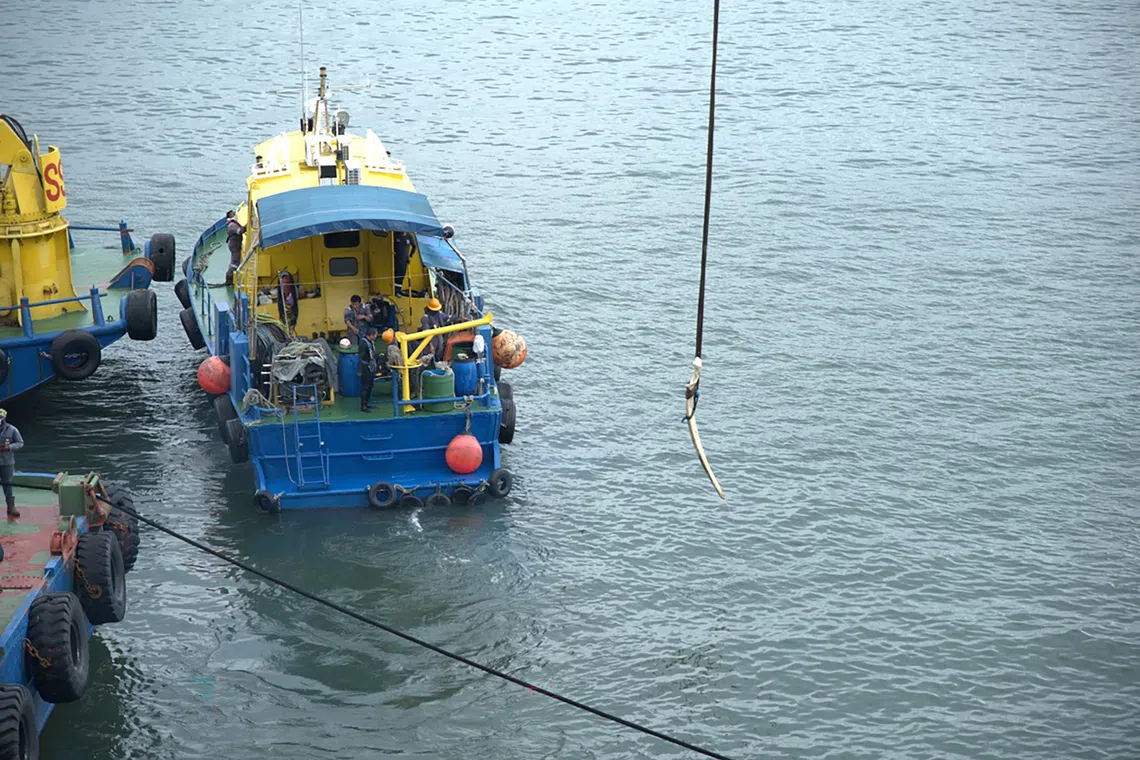
The mandible was fished out of the waters by the Singapore Salvage Engineers on Sept 13.
PHOTO: LEE KONG CHIAN NATURAL HISTORY MUSEUM, NATIONAL UNIVERSITY OF SINGAPORE
Despite experience handling shipwrecks larger than the carcass, the team had to rack their brains to handle the delicate and decomposing carcass described by project coordinator Alber Yong as “smelling like a dead rat, except magnified by a hundred times”.
Another challenge lay in cutting through the jelly-like flesh of the rotting whale.
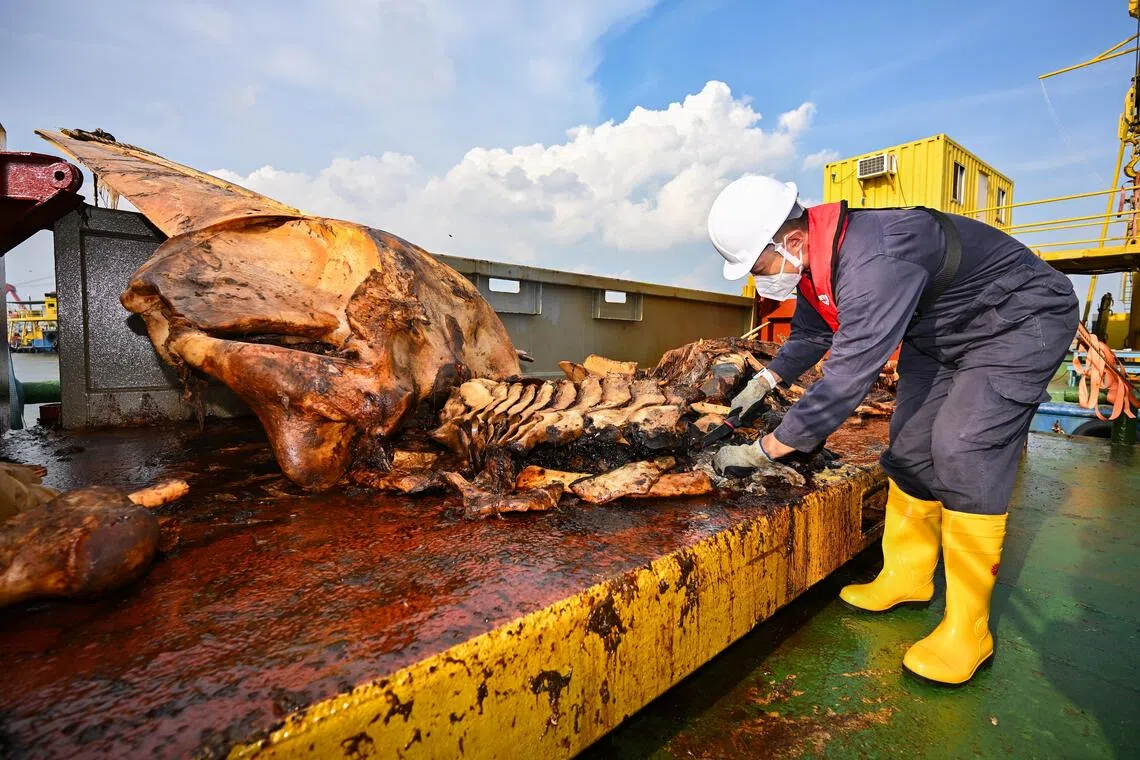
Mr Foo Maosheng, museum curator of cryogenic collection and insecta, showing how the flesh is removed from the baleen whale carcass at Singapore Salvage Engineers' shipyard in Tuas on Sept 26.
ST PHOTO: LIM YAOHUI
“The previous whale was quite fresh, so we could remove chunks of it rather easily, although it was still hard work pulling it up,” recalled Dr Chua, who coordinated the operation using lessons from the 2015 whale.
“But this one is highly decomposed, so the blubber was really soft, really elastic, and hard to cut through.”
Braving the humidity, heat and salty stench, museum staff have already stripped about 70 per cent of the carcass’ flesh off the bones using kitchen knives, filling an estimated 100 to 140 garbage bags.
The manual task of cutting away the flesh is key to preserving whale bones in land-scarce Singapore, according to Dr Chua.
Most museums typically handle a whale carcass by digging a hole and covering it with soil or horse manure, which are rich in ammonia, he said. This speeds up the decomposition of the flesh to get to the bones, but Singapore lacks the space to do the same.
Working alongside the team was an insect clean-up crew, as flies, maggots and beetles descended upon the whale to digest its tissue once the carcass left the sea.
Concurrently, the team has started degreasing each bone by simmering it in water and detergent to extract the oils.
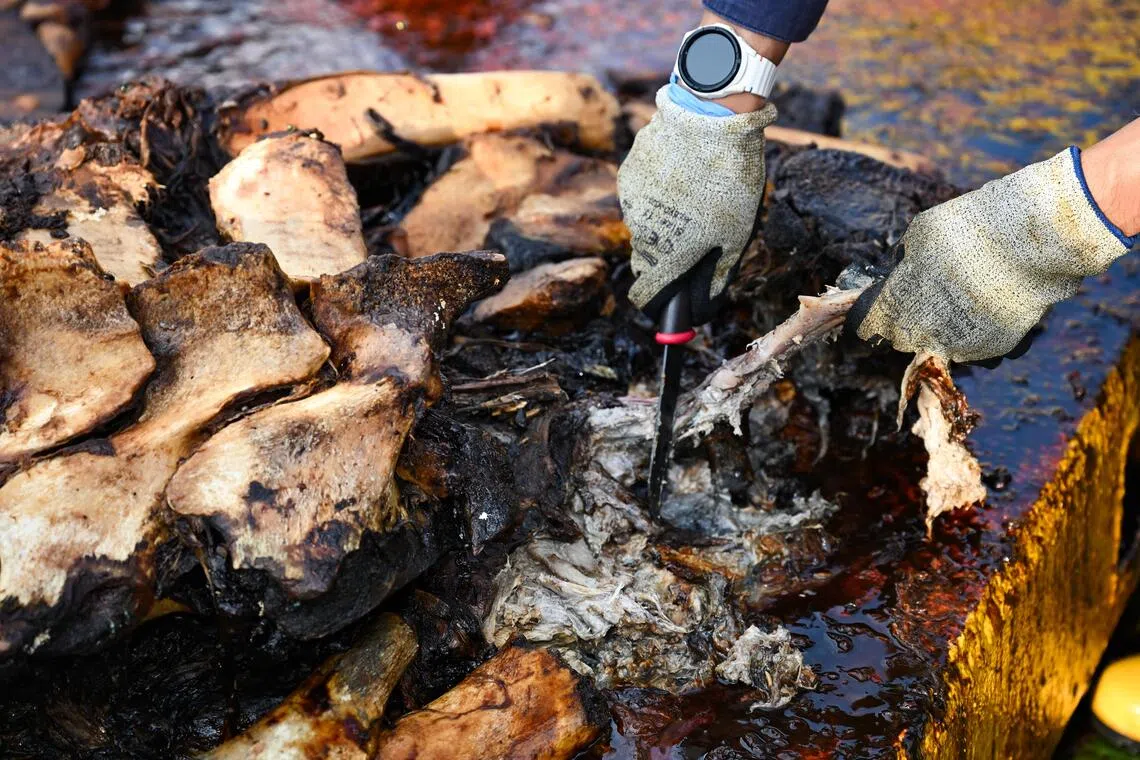
Mr Foo Maosheng demonstrating the defleshing of the baleen whale carcass on Sept 26.
ST PHOTO: LIM YAOHUI
The oil content in whale bones makes up to 40 per cent of the bone, according to Dr Chua. This acts as energy reserves during periods when no food is available, and helps whales to float.
Even a small piece of bone can take five rounds of degreasing to reach a satisfactory state.
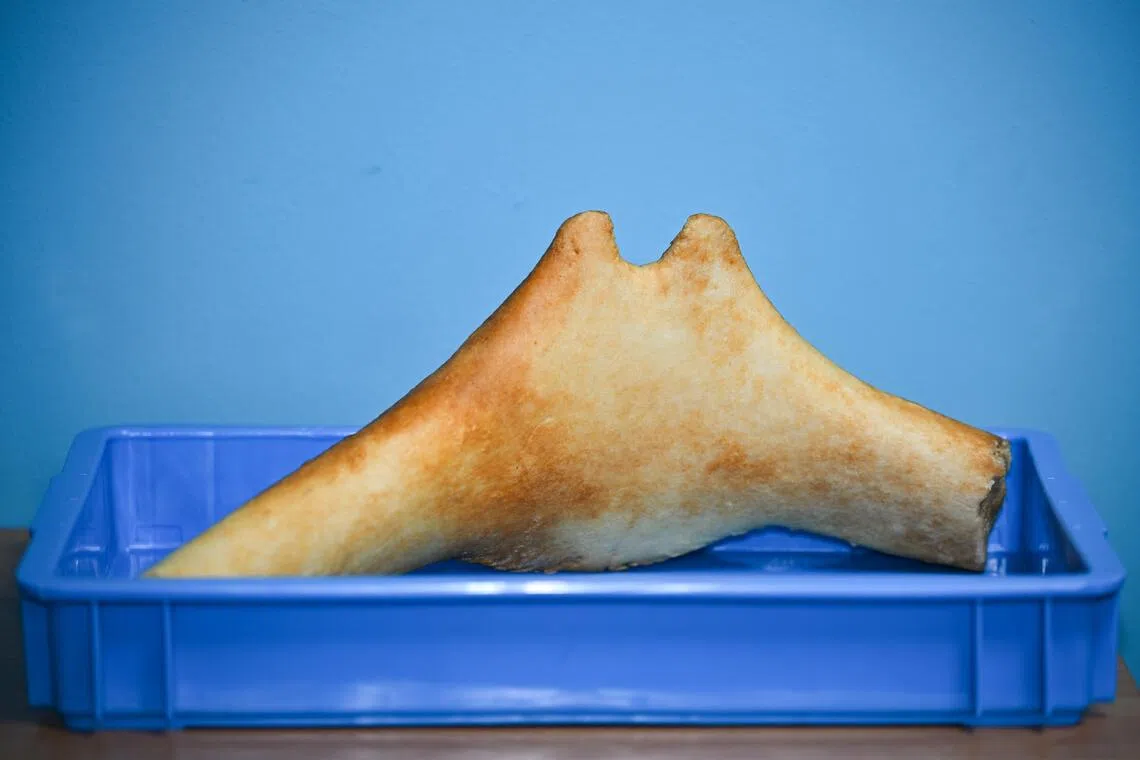
A cleaned and degreased hyoid bone from the baleen whale carcass seen during a visit to the Singapore Salvage Engineers' shipyard in Tuas on Sept 26.
ST PHOTO: LIM YAOHUI
Once ready, the whale’s bones will be moved to the museum, where they could follow Jubi Lee’s path by funding conservation of whales, said education officer Jharyathri Thiagarajah.
“We hope that we can run many years of programmes with the baleen whale as well,” she said. “It is a different kind of whale (from the sperm whale), so there are a lot of comparisons that can be made.”
This could take a while, considering that it took about 250 days to prepare Jubi Lee’s carcass for display. However, the museum team is determined to honour the whale’s death through their efforts in research and education.
Dr Chua said: “We are an island nation, so all our actions will affect what is happening in the surrounding waters. So, it is important to be good stewards of the environment, and I think the whale can be a flagship specimen for that.”


